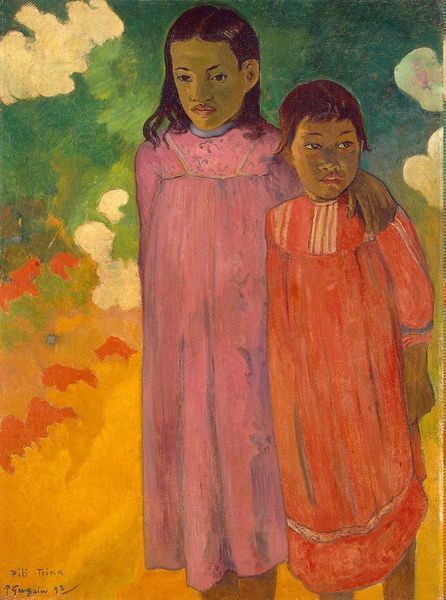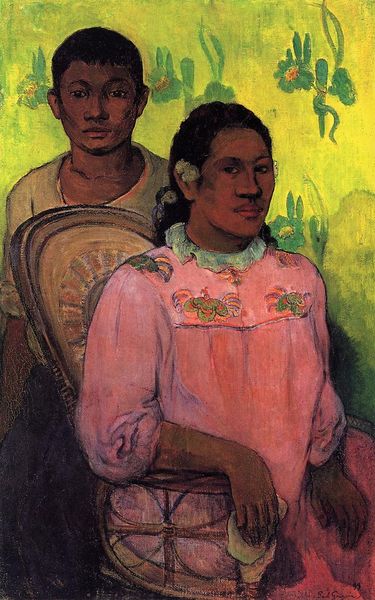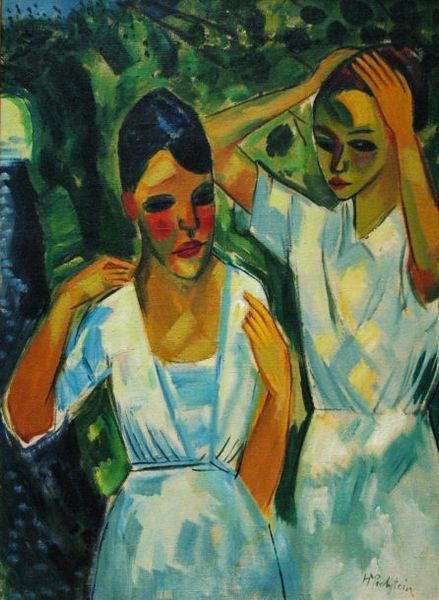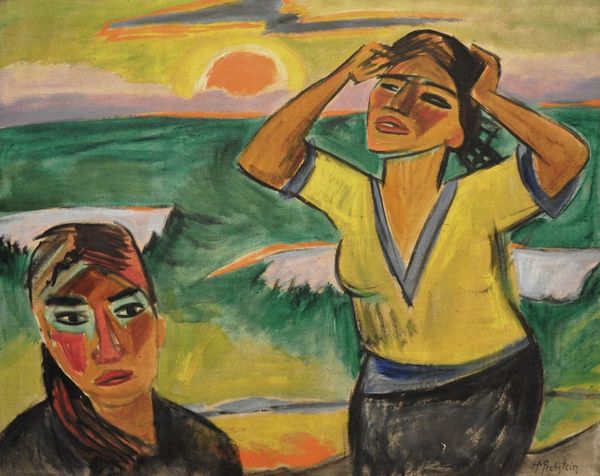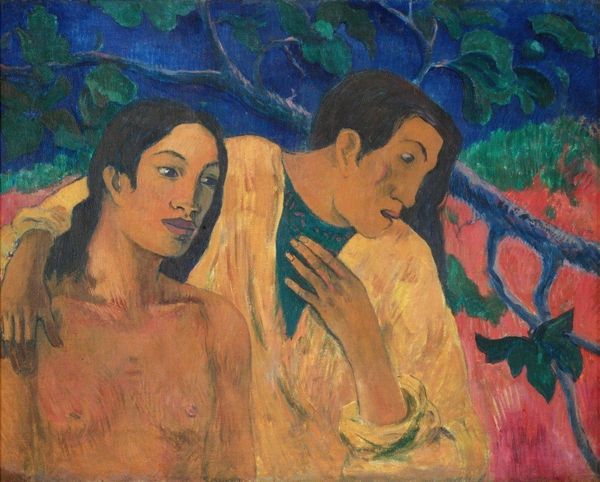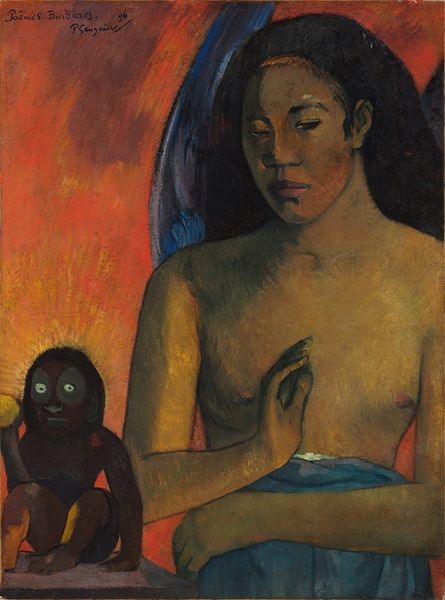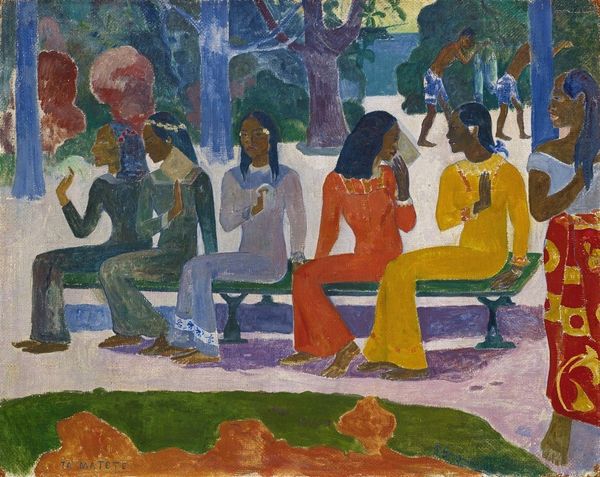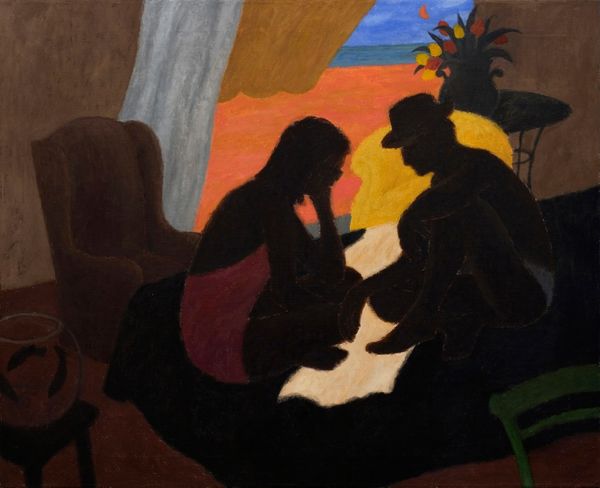
painting, oil-paint
#
portrait
#
figurative
#
painting
#
oil-paint
#
landscape
#
figuration
#
oil painting
#
naive art
#
genre-painting
#
post-impressionism
#
portrait art
Copyright: Public Domain: Artvee
Curator: Paul Gauguin's "Two Women," painted in 1901, offers a window into his post-Impressionist explorations in Tahiti. He rendered the piece in oil on canvas. Editor: It feels simultaneously grounded and dreamlike. There's something very direct and confrontational about the subjects' gazes, yet the stylized color and form create an otherworldly atmosphere. Curator: Absolutely. Gauguin's use of flattened perspective and non-naturalistic color serves a symbolic purpose. The women's ochre skin tones, for instance, relate them intimately to the land. The blue of one woman's dress could signal her status or spirituality. Editor: It's striking how the hands are rendered. The older woman's hand resting on the younger woman's arm feels both protective and perhaps subtly controlling. We know that Gauguin’s views on gender roles within the Tahitian society were particularly complex and quite frankly, very problematic, in reality. Curator: True. His work offers an important glimpse into the colonial gaze of that era. However, on a different reading, the physical touch may imply familiarity, relationship or emotional connection that reflects social cohesion which Gauguin sought within his own environment. We might want to unpack this contradiction further. Editor: I see your point, although I am more interested in examining the image as an allegory of tradition and change, or maybe innocence. We are inevitably looking at it through the lens of art history and societal expectations. Curator: A tension beautifully expressed, for example, in the way the backdrop with Tahitian traditional house sets the cultural scene in conjunction with its symbolical contrast of European aesthetic and modern sensibilities through painting traditions, revealing perhaps an important clash of worlds at this turn of the century. Editor: This conversation really highlighted how multifaceted a single image can be and why revisiting these artworks through contemporary perspective is crucial. Curator: Indeed. I'm reminded of the layered cultural meanings inherent in this painting. Gauguin invites contemplation on identity and perception.
Comments
No comments
Be the first to comment and join the conversation on the ultimate creative platform.
